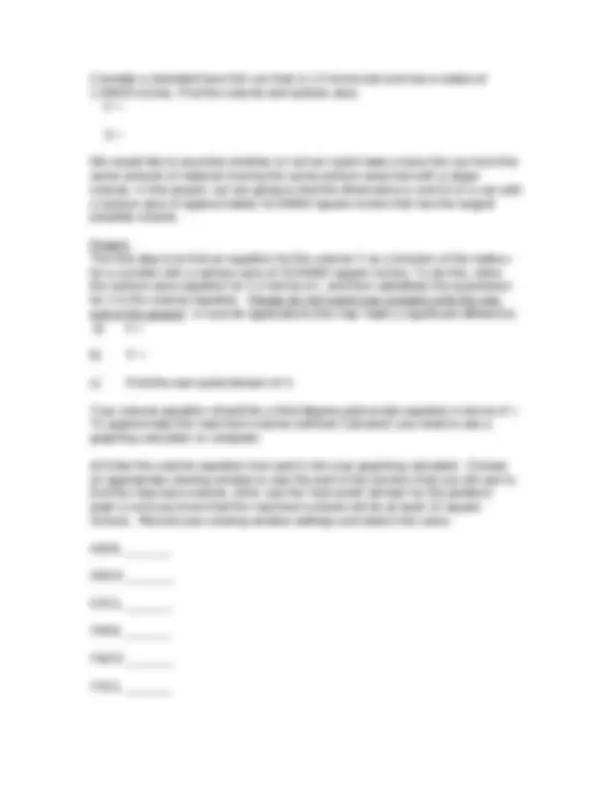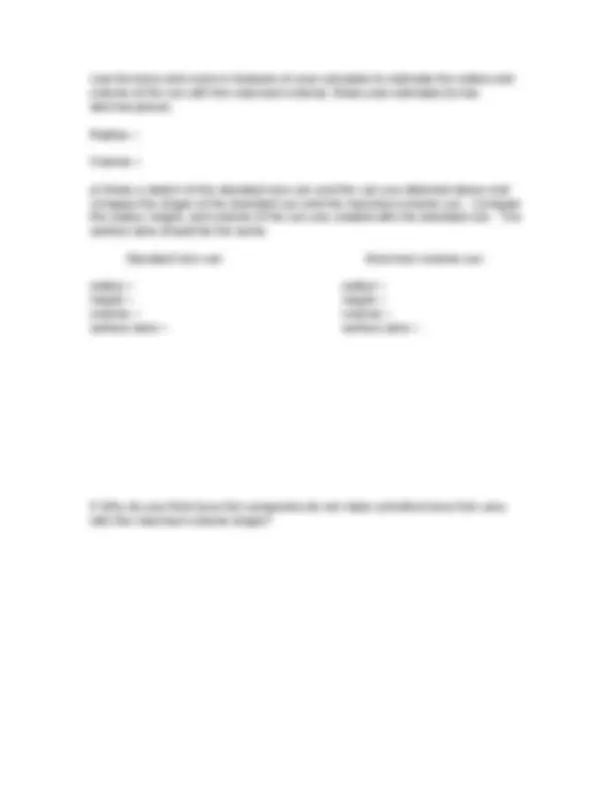




Study with the several resources on Docsity

Earn points by helping other students or get them with a premium plan


Prepare for your exams
Study with the several resources on Docsity

Earn points to download
Earn points by helping other students or get them with a premium plan
Community
Ask the community for help and clear up your study doubts
Discover the best universities in your country according to Docsity users
Free resources
Download our free guides on studying techniques, anxiety management strategies, and thesis advice from Docsity tutors
Material Type: Project; Class: College Algebra (QL); Subject: Mathematics; University: Salt Lake Community College; Term: Unknown 1989;
Typology: Study Guides, Projects, Research
1 / 4

This page cannot be seen from the preview
Don't miss anything!



Often, in manufacturing, decisions must be made that involve optimization: minimizing costs, minimizing materials waste, maximizing profit, etc. In this project, you are going to examine the process of maximizing the volume of a container that is made from a given amount of material.
Consider making an open box which is made from a 16" by 48” rectangular piece of cardboard by cutting equal sized squares from each corner and folding up the sides. Let x be the side of the squares that are cut out. 1 a) Write the function V which gives the volume of the box as a function of x. b) What is the 'real world' domain of V? c) Graph y = V ( x ) on an appropriate viewing window to get a picture which shows the turning point and x -intercepts of the function on its real-world domain. Sketch what you see by appropriately labeling and scaling your own axes.
Answer these questions about your function and its graph. You will need to use the trace and zoom-in features of your calculator. Which axis represents the volume of the box? Which axis represents the side of each cut-out square? If the cut-out squares have a side of 4 in, then what is the volume of the box? If the volume of the box is 1140 cubic inches, then what is the side of the cut-out square? What is the maximum volume of the box? What is the side of the cut-out square for the box of maximum volume?
Background: The volume of a cylinder with radius r and height h is V r^2 h. The surface area (the amount of material it takes to make the can) is (^) S 2 r 2 2 rh
Use the trace and zoom-in features of your calculator to estimate the radius and volume of the can with the maximum volume. Make your estimates to two decimal places. Radius = Volume = e) Make a sketch of the standard size can and the can you obtained above and compare the shape of the standard can and the maximum volume can. Compare the radius, height, and volume of the can you created with the standard can. The surface area should be the same. Standard size can Maximum volume can radius = radius = height = height = volume = volume = surface area = surface area = f) Why do you think tuna fish companies do not make cylindrical tuna fish cans with the maximum volume shape?